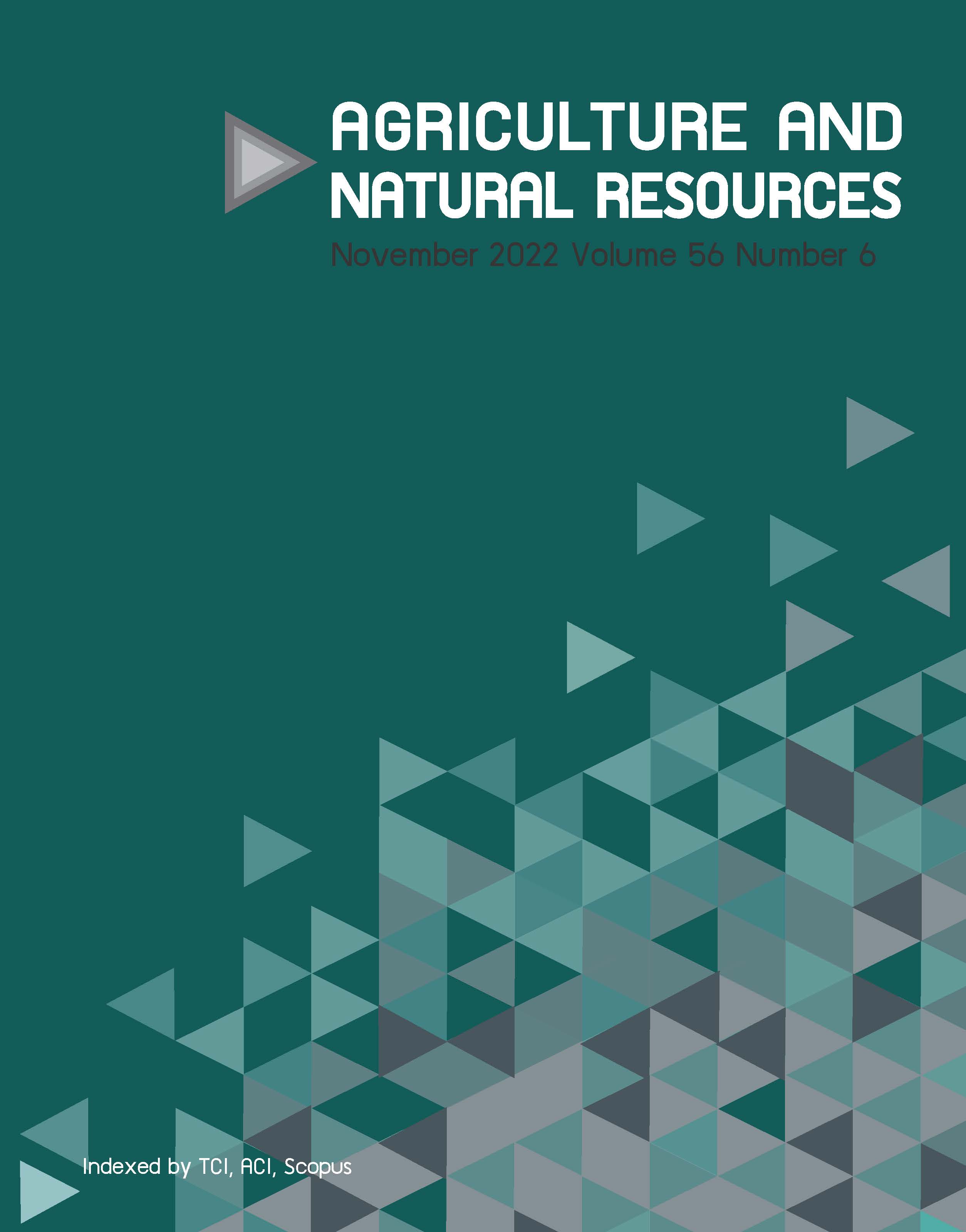Valorization of agricultural waste to produce myco-composite materials from mushroom mycelia and their physical properties
Keywords:
Agricultural waste, Biomaterial, Mushroom mycelium, Mycelium-based bio-compositeAbstract
Importance of the work: Mushroom mycelia can be utilized in novel and low-cost bio-fabrication for recycling agricultural wastes into eco-friendly biomaterials known as myco-composites.
Objectives: To investigate mushroom isolates and agricultural waste that could be used to make myco-composite materials.
Materials & Methods: The mycelial growth rate was investigated of each mushroom isolate along with the physical properties of myco-composites produced from five different mushroom isolates (Earliella sp. CMU-NK0461, Hexagonia sp. CMU-KA018, Lentinus sp. CMU-0712, Pleurotus sp. CMU-NK1032 and Pycnoporus sp. CMU-0189) and two different agricultural wastes (sawdust and rice straw).
Results: Lentinus sp. had the fastest growth rate and produced the highest mycelial biomass on potato dextrose agar. Lentinus sp. had the fastest growth rate on sawdust and rice straw. The various tested mushroom isolates and agricultural substrates produced myco-composites with different physical properties. Sawdust-based myco-composites had higher densities than rice straw-based myco-composites. However, the myco-composites produced from rice straw had greater water absorption and average shrinkage capabilities than sawdust. The myco-composites produced from sawdust and Lentinus sp. had the highest density (302.36 kg/m3) with the lowest average shrinkage (6.81%). The myco-composites produced from rice straw and Lentinus sp. had the greatest water absorption (284.41%).
Main finding: Notably, these myco-composite materials have a density that is similar to foams; however, these materials are more advantageous in the natural decomposition process. Additionally, the high water absorption ability of these myco-composites could be beneficial in future agricultural applications.
Downloads
Published
How to Cite
Issue
Section
License
Copyright (c) 2022 Kasetsart Universityonline 2452-316X print 2468-1458/Copyright © 2022. This is an open access article under the CC BY-NC-ND license (http://creativecommons.org/licenses/by-nc-nd/4.0/),
production and hosting by Kasetsart University of Research and Development Institute on behalf of Kasetsart University.







